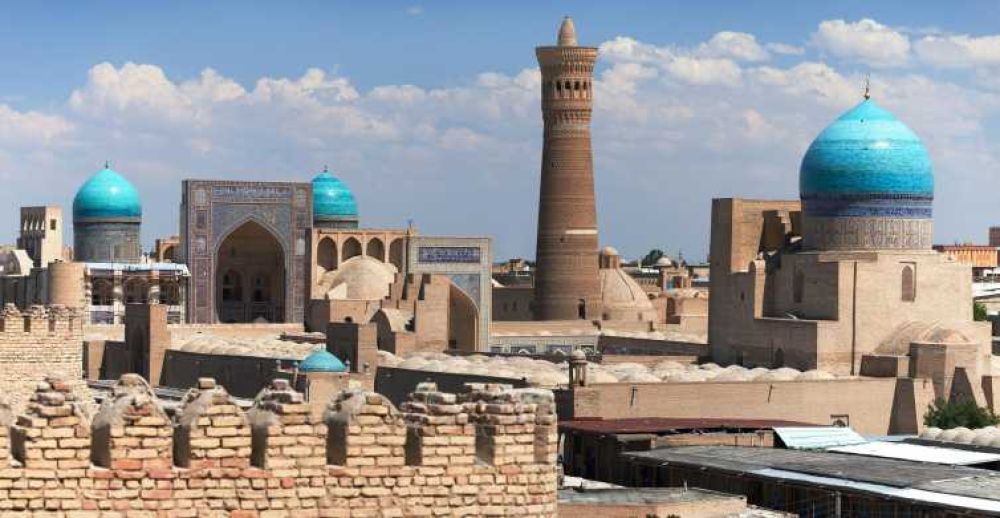

The Magoki-Attari Mosque is one of the oldest surviving monuments in Bukhara, Uzbekistan. Its history dates back to the Zoroastrian period, even before the arrival of Islam in Central Asia. The name 'Magoki-Attari' translates to 'Deep Pit' in Tajik, referring to its sunken setting, which is a result of the city's gradual rise over the centuries. The mosque's lower sections are the remnants of an earlier temple that was used for the sale of spices and herbs, thus "Attari" indicating a herbal sellers' market.
Reconstructed several times throughout history, with notable iterations during the 9th and 12th centuries, the Magoki-Attari Mosque retains elaborate brickwork and Islamic motifs emblematic of the Karakhanid and Samanid eras. It was a central part of the city's religious and social life up until the 16th century when it was converted into a carpet museum, which it remains to this day.
For several decades, access to Uzbekistan's historic sites was restricted, but the nation has seen a steady increase in tourism since gaining independence in 1991. As part of the historic city of Bukhara, a UNESCO World Heritage site since 1993, the Magoki-Attari Mosque has become a key attraction for history buffs and cultural enthusiasts.
Current tourism trends indicate a growing interest in authentic cultural experiences, with a focus on Silk Road history. Visitors to the Magoki-Attari Mosque can engage with the layered historical narratives that span pre-Islamic and Islamic eras. The latest trend, brought on by the COVID-19 pandemic, has seen a surge in domestic tourism and cautious reopening to international visitors, with health and safety protocols in place.
Ecotourism and sustainable travel practices are being encouraged by local stakeholders to preserve Bukhara's fragile monuments. The Magoki-Attari Mosque has benefited from these trends, with ongoing conservation efforts to maintain its intricate facade and historical importance for future generations.
Another development is the integration of digital technologies into tourism, with enhanced online platforms, virtual tours, and interactive apps for a more immersive visitor experience. Despite these innovations, the timeless appeal of the Magoki-Attari Mosque continues to draw visitors in pursuit of ancient wonders and architectural splendor.
To visit the Magoki-Attari Mosque, travelers should plan their trip to Bukhara, a city easily accessible by train or plane from Uzbekistan's capital, Tashkent. The mosque is located in the historic city center, making it convenient to combine with tours to other nearby heritage sites. The mosque's status as a museum allows visitors to explore its interiors and exhibitions, providing rare insights into the religious and domestic textiles of the region.
While the site is open year-round, the best time to visit is during the milder spring and autumn months, as the Uzbek climate can be extremely hot in summer and cold in winter. Admission fees and opening hours are subject to change, so it's recommended to check updated information from official tourism resources before planning your visit.